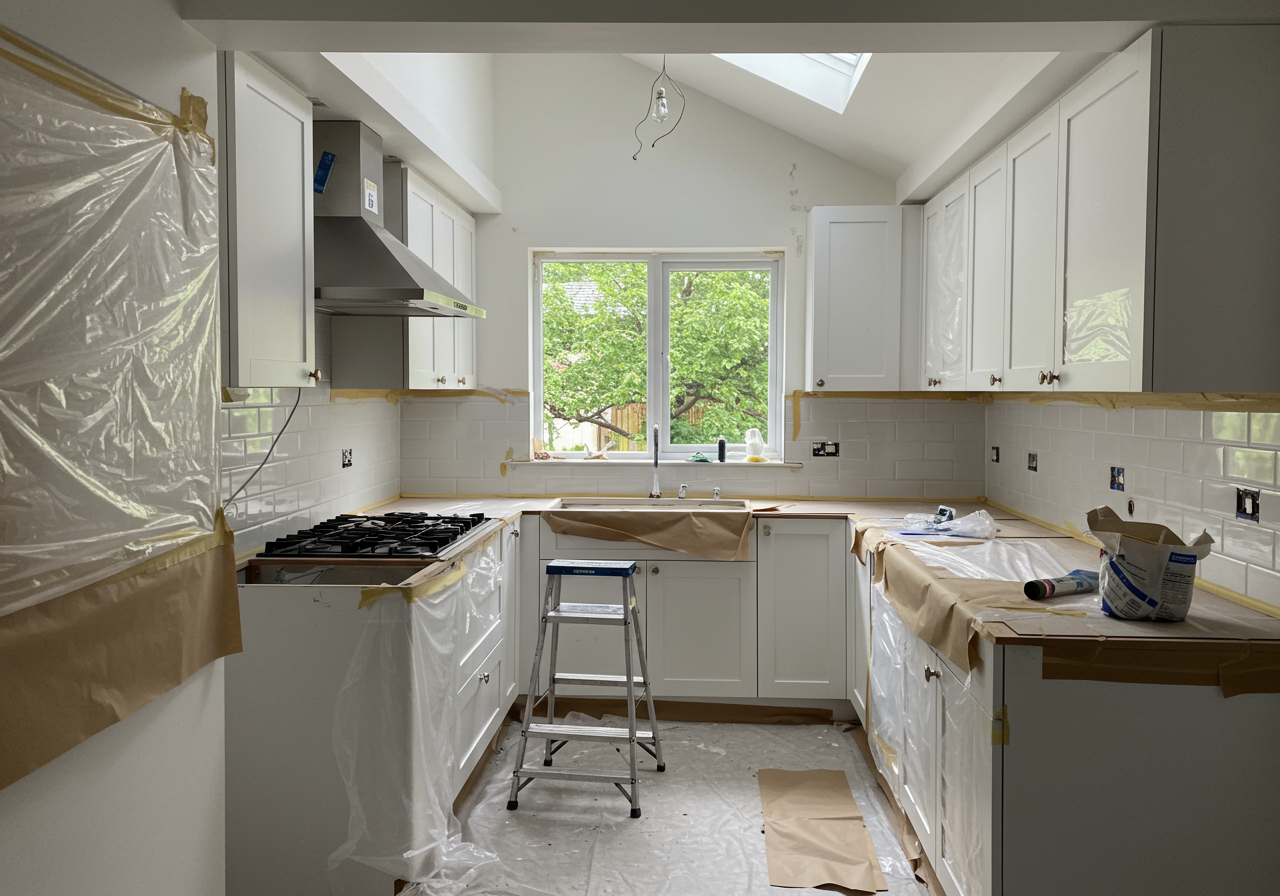Embarking on a gut renovation for your home can be a significant undertaking, but the rewards can be truly transformative, improving both your property's value and your quality of life. To ensure you make the most of this exciting project, it's essential to approach it with a helpful and informed mindset. In this guide, we'll outline what you can expect during a home remodel and explain why many homeowners opt for gut renovations.
The first step in your journey is to set a clear budget and timeline for your project. The cost of a gut renovation can vary significantly based on factors like the size of your home, the extent of the remodel, and the materials you choose. Generally, homeowners should anticipate spending anywhere from $300 to $600+ per square foot. Remember that the scope of work will also determine the timeline, so it's essential to be prepared for potential fluctuations.
Minor cosmetic changes like painting, installing new flooring, or updating fixtures usually don't require a building permit. However, it's always best to confirm with the local building department to ensure compliance with local regulations. In Greenwich, different building permits are essential to get. Applications for roof work, siding, window replacement to one or two-family dwellings, and minor interior ONLY renovations to one or two-family dwellings (like bathroom, kitchen renovation, finished basement or attic), can be sent easily through email. Permits for other projects need to be made in person. Below, we have listed different changes that require permits in the town of Greenwich.
Building Permits are required for all of the following:
- Constructing any new building or structure.
- Additions or alterations to any existing building or structure.
- Changing the use and occupancy type of any building or tenant space within an existing building.
- Converting an un-finished space [attic/basement] into habitable space.
- Constructing a new swimming pool, spa or hot tub or renovations to same.
- Constructing a tennis or sport court.
- Exterior decks.
- Fireplaces or wood burning stoves.
- Erecting a detached sign or attaching an exterior sign to a building.
- Adding solar panels to a building or erecting a freestanding array of solar panels.
- Retaining walls over 3 feet in height.
- Fences more than 7 feet in height.
- Demolition of any existing building or structure.
- Special events – Certain size tents, carnivals, fairs, etc; Including using the interior of buildings for a use that it was not designed or intended for [ie; crafts shows, fairs, and any other similar use].
Trade Permits – A trade permit is required for all of the following:
- Electrical work
- Plumbing work
- HVAC work [heating and cooling]
- Installing a generator
To ensure the success of your gut renovation, it's crucial to hire the right residential design firm or contractor. These skilled professionals will guide you through the planning phase, helping you make informed decisions about design and material choices. They will also handle the necessary permits and work closely with you to understand and execute your vision effectively. Here at the Sarsen Team, we have plenty of experience with different trusted professionals that can help get your job done! Please let us know if you would like us to introduce you.
A gut renovation may cause some disruption to your daily life, so being aware of potential timelines can help you plan accordingly. The time it takes to complete the project depends on various factors. The scope of work is a significant consideration; more extensive renovations, such as moving load-bearing walls or updating foundation structures, will take longer than minor changes or updates. Expect about 4 to 6+ months when starting your gut renovations.
Another factor affecting the timeline is the availability of materials and labor. Sourcing quality building materials within your budget and finding reliable contractors who align with your vision can take time. The age and condition of your home also play a role, as older homes may require more extensive work to meet current building codes. For years we have worked closely with our trusted builders. Please let us know if you need help finding the perfect local builder.
Customization and complexity in your interior design scheme can also influence the project's duration. If you desire intricate finishes, unique room layouts, or custom features, additional time will be needed for detailed craftsmanship and coordination between tradespeople.
Moreover, the size and orientation of your home, as well as the number of rooms involved in the renovation, directly impact the length of the remodeling process. Larger spaces with multiple areas transforming naturally demand more time than smaller dwellings with fewer rooms involved.
It's important to anticipate unexpected issues during any significant renovation. Unforeseen challenges, such as corroded pipes or unpermitted electrical work, can delay the completion of your project. I think it's best to plan for potential setbacks by padding your budget and timeline.
In conclusion, a gut renovation is a substantial project that requires careful planning and consideration. By setting a realistic budget, understanding potential timelines, and working with a reliable design team, you can navigate the renovation process with confidence. Remember, the result will be a safe, functional, and aesthetically pleasing living space that reflects your unique style and enhances your lifestyle. Happy renovating!
